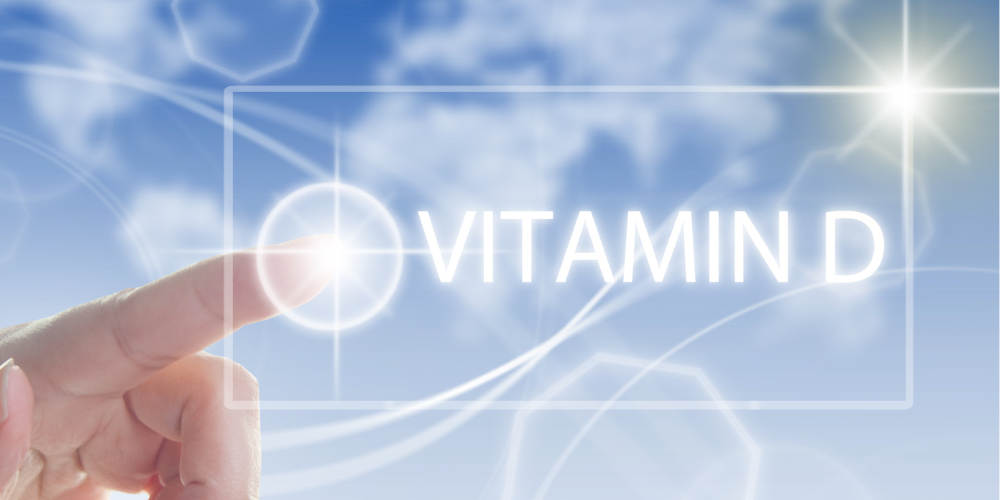
I’m going to kick things off by demystifying Vitamin D, commonly dubbed the ‘sunshine vitamin.’ This nickname comes from the fact that your body is pretty clever; it can make Vitamin D when your skin is exposed to sunlight. Just imagine that! But this isn’t just about soaking up some rays; Vitamin D is a heavyweight in the nutrient world, heavily involved in a slew of bodily functions.
Now, you might be wondering, ‘How exactly does my body make Vitamin D from sunlight?’ It’s quite fascinating. When your skin catches some sun, it synthesizes Vitamin D from the cholesterol present there. That’s right, good old cholesterol serving a purpose you might not have expected.
This nutrient is no one-trick pony; it plays an instrumental role in health. It’s like the multitool of vitamins, important for everything from keeping your immune system in top shape to ensuring your bones are sturdy. Some studies even suggest it’s a key player in brain health. Considering all these perks, it’s not hard to see why having adequate levels of Vitamin D is a big deal.
Despite its importance, getting enough of this vitamin can be tricky. That’s going to include recognizing the limited food sources available and the worrying fact that many people run the chance of having a deficit. This is why Vitamin D deserves a spot on your nutritional radar, and it’s a good idea to make sure you’re armed with the right information to keep your levels on track.
So, why is enough Vitamin D critical? The next section is going to cover why your body is a fan of this nutrient, and trust me, it’s a list worth checking out.
Why Your Body Needs Vitamin D
You’re going to find out why vitamin D isn’t just a nice-to-have, it’s essential. Think of your body as a complex machine, and vitamin D is a crucial oil that keeps various parts smoothly running. From bolstering your immune system to ensuring your bones are strong enough to hold you up, this nutrient plays a starring role in your well-being.
Vitamin D does some of its best work in the immune system, pitching in as part of your body’s defense squadron against foreign invaders. It’s like a security guard, helping to recognize and fend off bacteria and viruses that can cause illness.
But this nutrient’s resume doesn’t stop there. Vitamin D also has a big part in bone health, working closely with calcium to make sure your bones and teeth stay hard as rock. Without enough vitamin D, your body can’t absorb calcium effectively, which could leave you at risk for weak bones or even osteoporosis as you get older.
And let’s talk about the brain. Vitamin D has a hand in brain function and may play a role in maintaining a healthy mood. There’s ongoing research into how it contributes to mental health, but one thing’s for sure: this nutrient is a key player in keeping your mind sharp.
Researchers are also looking into vitamin D’s relationship with cancer prevention. While this is an area of emerging science, some studies suggest that sufficient vitamin D levels might be associated with a lower risk of certain types of cancer.
In the next section, we’ll move from the ‘why’ to the ‘how’ as we explore the diverse sources of vitamin D. From the shining sun above to the food on your plate, you have a variety of ways to ensure that your body gets enough of this vital nutrient. So keep reading, because this is where you’ll learn how to translate what’s on the label to what’s on your fork.
Sunlight to Plate: Best Vitamin D Foods and How to Include Them
You’ve likely heard that fish is a brain food, but it’s also a shining star for vitamin D. Topping the charts are fatty fish like mackerel, halibut, trout, and sardines. Including these in your diet could significantly ramp up your vitamin D levels. For a quick lunch, try a sardine salad or grill some trout for dinner—and you’re not just getting vitamin D, but a dose of heart-healthy omega-3 fatty acids too.
But fish isn’t the only player here. Consider fortified foods; these are your daily staples—like milk, plant-based milk alternatives, orange juice, and cereals—that have been loaded with extra nutrients. By choosing fortified options, you automatically boost your vitamin D intake. Next time you’re in the grocery store, skim through the labels and choose products with added vitamin D to effortlessly integrate it into your meals.
Mushrooms can also be a surprising source of vitamin D, especially when they’ve been exposed to ultraviolet light. Not all mushrooms are created equal, though—look for varieties like maitake and chanterelle, which tend to have higher levels. Throw them in omelettes, salads, or stir-fries for a nutrient-rich addition to any dish.
It’s important to think of vitamin D foods as part of a bigger picture. You don’t have to overhaul your diet overnight. Start by incorporating one or two vitamin D-rich items into your daily routine. Maybe you opt for a glass of fortified orange juice with breakfast or throw some mushrooms into your pasta sauce at dinner. It’s all about small, manageable steps towards a healthier lifestyle.
Vitamin D on a Plant-Based Diet: Vegan Sources to Consider
If you’re following a vegan lifestyle, getting enough Vitamin D can present a unique set of challenges. Animal products are among the most common sources of this nutrient, but don’t worry too much about it. There’s an array of plant-based options that can help you hit your daily goals.
First up, consider fortified foods. Plant milks, such as soy, almond, and oat, are often enriched with Vitamin D, and so are some types of orange juice and cereals. Just be sure to check the labels for confirmation.
Mushrooms can be your best friend when it comes to Vitamin D. Some varieties, like maitake, are naturally high in the nutrient, especially if they’ve been grown under ultraviolet light. Dried versions of these fungi can also be particularly rich in Vitamin D.
Supplements can play a crucial role for vegans. Vitamin D2 supplements are always vegan-friendly, while Vitamin D3 supplements are typically derived from animals; however, there are vegan D3 options sourced from lichen.
Choose something that resonates with you, whether it’s a fortified plant milk you enjoy with breakfast or a mushroom-based dish for dinner. If you opt for supplements, a combination of D2 and vegan D3 could be the best strategy to maintain optimal levels.
Your first attempt doesn’t need to be your last. If one food source doesn’t work for you, there are others to explore. Plus, knowing you’re keeping your body fortified with this essential nutrient will give you peace of mind.
Recognizing and Preventing Vitamin D Deficiency
I’m going to walk you through some of the warning signs that could indicate a Vitamin D deficiency. These often-overlooked signs might be telling you that your body is craving more of this crucial vitamin.
That’s going to include understanding the groups most at risk. Whether it’s due to limited sun exposure, dietary restrictions, or certain medical conditions, knowing if you’re at risk is the first step to prevention.
You’re going to find out about strategies to virtually safeguard yourself from deficiency. This isn’t just about soaking up some sunshine; it’s also about making smart dietary choices and considering a supplement if necessary.
Don’t worry too much about exact numbers here; it’s about developing habits that keep your Vitamin D levels in a healthy range. Combine sensible sun exposure with a diet rich in Vitamin D, and you’re well on your way to dodging deficiency.
Choose something that resonates with you, whether that’s a brisk walk in the morning sun, savoring Vitamin D-rich foods, or routine supplementation. Remember, this nutrient works in concert with others like Calcium and Magnesium for maximum benefit.
Optimizing Vitamin D Absorption for Better Health
You’re going to find out that there’s a neat interplay between the sun, your meals, and your body’s health when it comes to Vitamin D. It’s not just about gulping down foods high in this nutrient or basking outdoors; it’s about optimizing absorption for your wellbeing.
Let’s talk strategy. I like to leverage the sun’s power first. Just 10 to 20 minutes of sunshine several times a week can significantly bolster your Vitamin D levels. But remember, it’s vital to balance sun exposure with skin care and health.
Diet-wise, you can always adjust your approach down the road. Start by integrating Vitamin D powerhouses like fatty fish, fortified dairy, and certain mushrooms into your meals. And fruitfully, Vitamin D is fat-soluble, so pairing these foods with healthy fats can aid absorption.
Supplements are another avenue, especially if you’re finding it challenging to get enough from food and sun. A good rule of thumb? Choose something that resonates with YOU and your health needs, like a quality D3 supplement. Consult a healthcare professional first to tailor the right dosage.
Your first attempt doesn’t need to be your last. Keep monitoring your health, and don’t worry too much about perfection. Adjust as you go, and enjoy the various sources of this sunshine vitamin. Your body – and health – will thank you for it.
